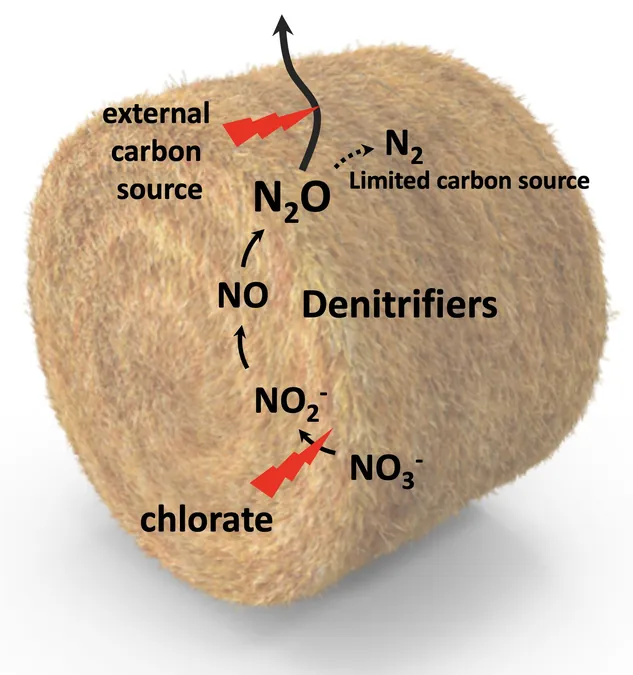
Revolutionary Changes in Silage Production Could Slash Agriculture's Greenhouse Gas Emissions!
2024-09-24
Introduction
The agriculture sector is under scrutiny as the largest contributor to nitrous oxide (N2O) emissions in the United States—a potent greenhouse gas that poses significant threats to our environment. However, researchers are now unveiling a groundbreaking approach that could transform this scenario: modifications in silage production.
What is Silage?
Silage, the moist plant material typically harvested and fermented for livestock feed during winter, is crucial to maintaining livestock health and productivity. This preservation process utilizes anaerobic bacteria to convert sugars in the plants into lactic acid, effectively keeping spoilage at bay. Yet, what many may not realize is that while silage plays a vital role in farming, it could also be a surprisingly significant source of N2O emissions—an aspect that has remained largely overlooked until now.
Research Findings
In a detailed study published in PNAS Nexus, Jeongdae Im and his team reveal startling findings regarding nitrous oxide emissions from three commonly used forage crops in the U.S.: maize, alfalfa, and sorghum. Their innovative research monitored these crops over a four-week period, discovering that all produced considerable amounts of nitrous oxide. Alarmingly, this indicates that forage conservation methods, often considered sustainable, might now be identified as one of the largest sources of agricultural nitrous oxide emissions.
The Role of Chlorate
But hold on—there's a silver lining! The introduction of a substance called chlorate made a world of difference; the addition led to a significant reduction in N2O emissions across all the assessed crops. This finding posits chlorate not only as a potential game-changer for silage production but also as a practical tool in the fight against greenhouse gas emissions from agriculture.
Understanding Emission Mechanics
Delving deeper into the mechanics of these emissions, the authors found that the culprits behind the majority of N2O production in silage aren't the nitrifying bacteria— which commonly convert ammonia into nitrate—but rather the denitrifying bacteria. This revelation opens the door to using denitrification inhibitors, such as chlorate, to mitigate emissions effectively.
Global Implications
With global warming on the rise and climate impact becoming more pronounced, these findings present an urgent and exciting opportunity for further research. By refining silage production practices through the use of chlorate and similar additives, it's possible to make meaningful strides towards reducing what could very well be the third-largest source of nitrous oxide emissions in agriculture.
Conclusion
The implications of this research could extend well beyond American borders, setting a precedent for agricultural practices worldwide. As stakeholders in the agriculture industry consider adopting these innovative changes, the potential benefits for both livestock and the environment could be monumental. Could this be the breakthrough we've been waiting for? The time to act is now—our planet's future may depend on it!

 Brasil (PT)
Brasil (PT)
 Canada (EN)
Canada (EN)
 Chile (ES)
Chile (ES)
 España (ES)
España (ES)
 France (FR)
France (FR)
 Hong Kong (EN)
Hong Kong (EN)
 Italia (IT)
Italia (IT)
 日本 (JA)
日本 (JA)
 Magyarország (HU)
Magyarország (HU)
 Norge (NO)
Norge (NO)
 Polska (PL)
Polska (PL)
 Schweiz (DE)
Schweiz (DE)
 Singapore (EN)
Singapore (EN)
 Sverige (SV)
Sverige (SV)
 Suomi (FI)
Suomi (FI)
 Türkiye (TR)
Türkiye (TR)